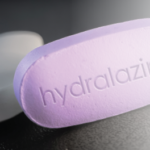In the Plasma Exchange and Glucocorticoids in Severe ANCA-Associated Vasculitis (PEXIVAS) study, patients in both the plasma exchange and no plasma exchange arms were further randomized to a standard glucocorticoid tapering regimen or a low-dose glucocorticoid regimen.4 The latter regimen ensured all patients were tapered to 10 mg/day or less of prednisone by week 14. The low-dose glucocorticoid regimen proved non-inferior to the standard-dose group with regards to the primary composite outcome of death from any cause or end-stage kidney disease. Additionally, patients in the low-dose group had fewer infections (27% vs. 33%) over one year of follow-up.
Similarly, a retrospective cohort study of more than 200,000 patients with rheumatoid arthritis receiving stable disease-modifying anti-rheumatic drugs (DMARDs) for more than six months showed the treatment of patients with glucocorticoids was associated with a dose-dependent increase in the risk for serious infection, with small but significant risks even at doses of 5 mg or less per day.5
Dr. Yazdany said these trials illustrate that it’s worthwhile to evaluate how quickly glucocorticoids can be tapered in the treatment of certain conditions without sacrificing efficacy. Additionally, even low doses of glucocorticoids can be associated with adverse events clinicians should seek to avoid.
Maintenance Therapy
Dr. Yazdany went on to discuss the emerging evidence for different maintenance therapies in two conditions: axial spondyloarthritis (axSpA) and vasculitis.
In the C-OPTiMise trial, more than 300 patients with early axial axSpA who had achieved sustained remission with certolizumab after a 48-week run-in period were randomized to receive either 200 mg of certolizumab every two weeks or tapered to 200 mg of certolizumab every four weeks vs. placebo. This study found patients were able to safely reduce their treatment from every two weeks to every four weeks without a statistically significant increase in the number of disease flares. Meanwhile, stopping treatment did lead to a significantly increased risk of flare.6
For vasculitis, the MAINRITSAN clinical trials have yielded helpful insights into sustaining remission in patients with anti-neutrophil cytoplasm antibody (ANCA)-associated vasculitides. MAINRITSAN 1 showed patients receiving maintenance therapy with rituximab were more likely to have sustained remission compared with those maintained on azathioprine.7 MAINRITSAN 2 showed relapse rates did not differ significantly between patients receiving a fixed-schedule rituximab regimen for maintenance therapy (500 mg on days 0 and 14, followed by 500 mg at months 6, 12 and 18 after the first infusion) and those receiving an individually tailored regimen of rituximab (500 mg at randomization, followed by reinfusion only when CD19+B lymphocytes or ANCA had reappeared or ANCA titer rose markedly based on trimestrial testing until month 18).8


